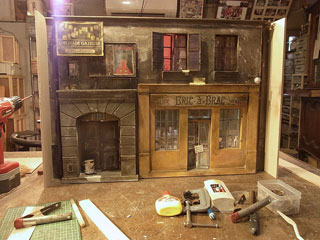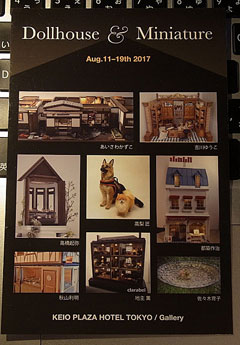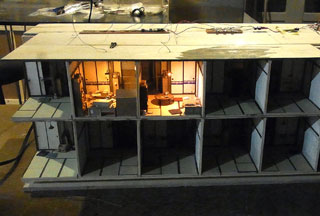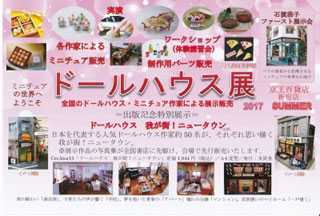はやくMac に変えたほうがいいですよ‥と何人もの人に勧められ、今年の3月、とうとうMac Book Pro というPC を買ってきてしまった。使ってみると確かにいい。それまで使っていたウィンドウズよりも格段と動きが速く、キーボードも実にたたきやすい。それはいいのだが、操作方法の不明箇所が次々と出てきて、ときどき気が狂いそうになった。そんなときにタイミングよく、Doozy Model Works の奥川さんが遊びに来てくれて、いろいろと教えてくれたのである。奥川さんはぼくよりもひと回り以上若い上に元グラフィックデザイナーなので、Mac 使いのプロである。その後も定期的に来てくれるようになり、イヤな顔ひとつせず、親切に教えてくれたおかげで、だんだんと小生もMac が使えるようになってきた。奥川さんにはずいぶん助けてもらった。
そんなわけで本日は、以下、奥川作品の宣伝をさせていただく。
当欄の読者ならDoozy Works の奥川泰弘さんのことは知っていると思う。いっときイエサブで、ぼくの棚の隣がDoozy さんのコーナーだったこともあった。見るのがイヤになるぐらいクールな情景模型の作者で、通常は米西海岸風な、爽やかな風が感じられるような明るい作品をつくっている。その彼が、最近、な、なんとアメ横をつくったという。
さっそく見に行って、ぶったまげた。
「うわ~、アメ横だぁ~!!!」(下の写真)。
正札の378万円!(消費税込み)を横目に見ながら、ぐるっと回ると裏側も、上から眺めりゃ上側(ガード上の線路)もちゃんとつくってある正に驚愕の一品。
——-この奥川作品は、現在上野駅の構内で見ることができますので、みなさんもぜひ見に行ってくださいね! (JR山手線上野駅、公園口の改札を入ってすぐ右側に「上野ランド」という名前のスーベニールショップがありますが、作品はその店のド真ん中に置いてありますので。)

2017年8月30日







